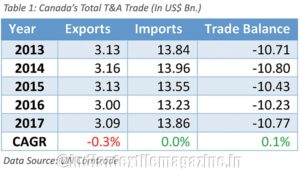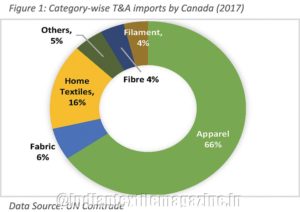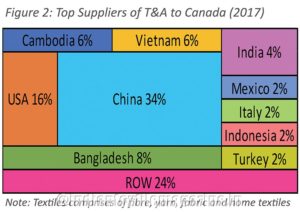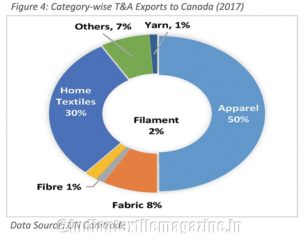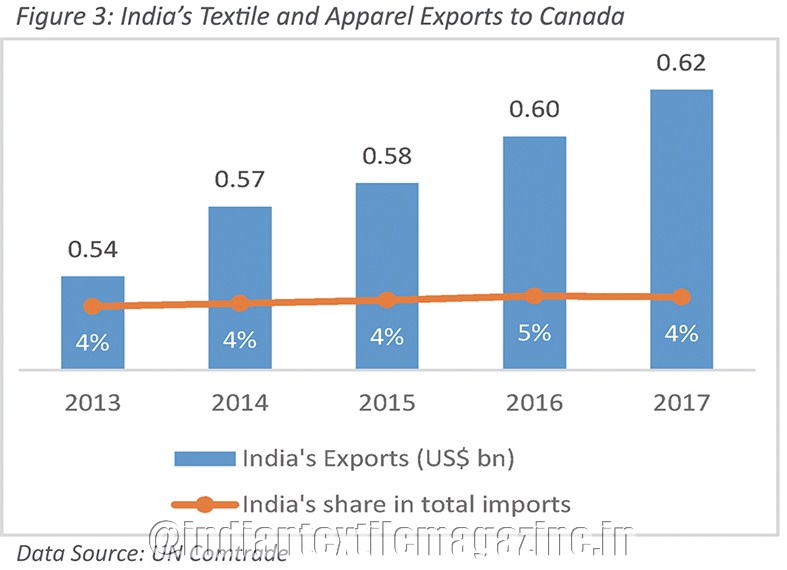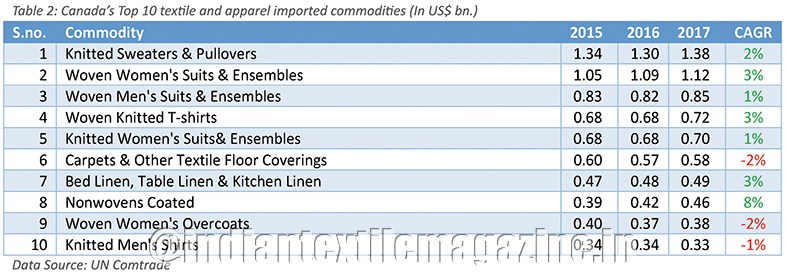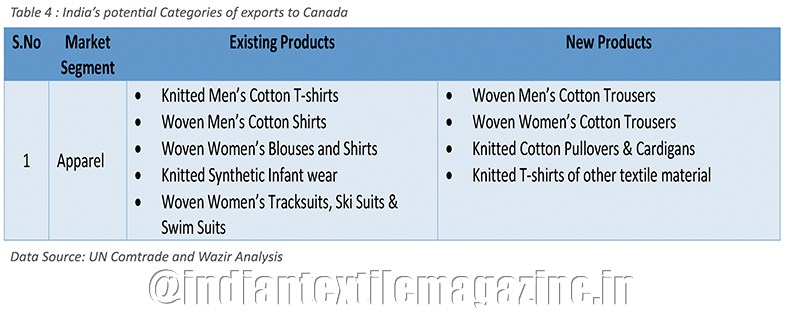Canada’s total textile and apparel (T&A) imports have remained stagnant over the last five years at $13.86 billion in 2017, while its exports have decreased at -0.3% to touch $3.09 billion. The textile and apparel trade balance recorded a deficit of around $10.77 billion in 2017.
Apparel is the largest imported category by Canada, representing 66% of total textile and apparel imports (2017). This is followed by home textiles, fabrics and others with a share of 16%, 6% and 5% respectively. Top 10 suppliers accounted for ~85% of textile and apparel imports by Canada. China is the largest supplier accounting for a 34% share, followed by the US and Bangladesh with a share of 16% and 8% respectively. In terms of y-o-y exports to Canada, exports from all countries have grown, excluding Mexico. India’s exports to Canada increased at 3% y-o-y.
India’s share in Canada’s textile and apparel imports declined over the past few years. India was the 6th largest supplier of textile and apparel products to Canada in 2017. Its T&A exports to Canada stood at $0.62 billion in 2017. Though it represented a growth of 4% over the last five years, India’s share has declined from 5% to 4%. Apparel is the largest category with a share of 50% in India’s T&A exports to Canada. This is followed by home textiles and fabrics having a share of 50% and 8% respectively.
Over the years, the apparel production in Canada continues to decrease while imports continue to increase. Since India has a huge scope for expansion of apparel exports to Canada, it is important that Indian apparel exporters consider Canada as an important destination for their products. In order to cater to this demand, Indian apparel manufacturers need to undertake suitable investments on product innovation. Focus on technology enhancement and manufacturing excellence will act as a key mantra for raising the trade flow between the two countries.
